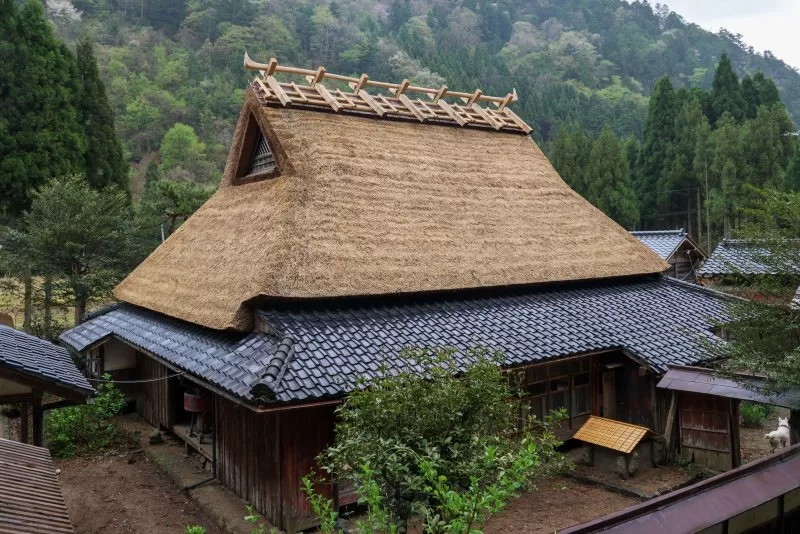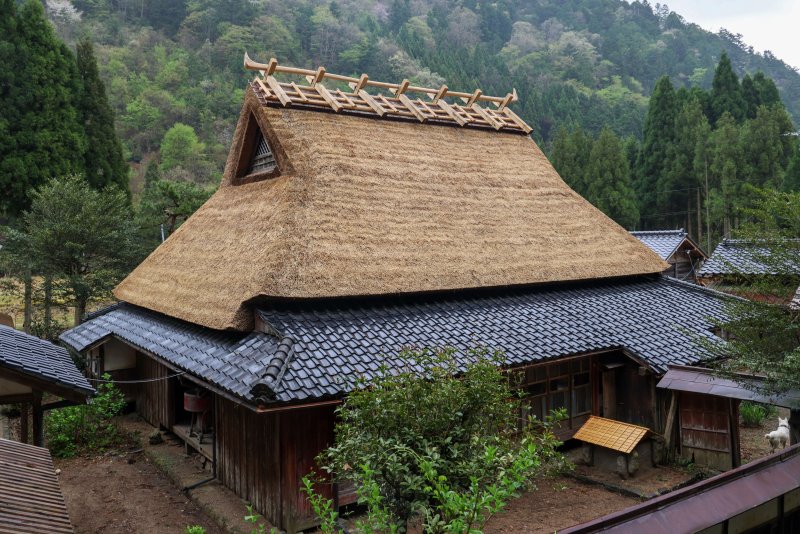This is a traditional Japanese kominka farmhouse in the countryside of Kyoto. These structures implement centuries of traditional design and building techniques and are constructed from natural materials. Photo by David Caprara
KYOTO, Japan, Nov. 26 (UPI) — There has been a lot of buzz online recently about Japan’s affordable houses, some of which can be purchased for as little as $10,000.
Social media accounts like CheapHousesJapan on Instagram-featuring listings, most priced under $100,000, have attracted hundreds of thousands of followers worldwide, inspiring dreams of alternative ways of living.
Traditional Japanese homes, characterized by millennia-old craftsmanship, such as intricate wood joinery, sliding paper doors, fragrant tatami mats and meticulously designed Zen-inspired gardens, can be stunningly beautiful.
They often leave many wondering why they are paying hundreds of thousands of dollars for homes elsewhere.
While dropping everything to move to Japan is impractical or impossible for most, the buzz around Japan’s abandoned housing boom has been fueled by increasingly challenging economic circumstances worldwide.
In the United States, for example, younger generations are significantly less likely to achieve the American dream of homeownership compared to older generations at the same age.
According to the U.S. Census Bureau, the average sales price of a new house in the U.S. was $501,000 in September. For many, the idea of owning a Japanese home represents less of a tangible relocation plan and more of a mental exercise in questioning their immediate circumstances.
According to a 2024 Bank of America Institute’s analysis, close to one-fourth of Americans are living paycheck to paycheck. To younger generations, stable lifelong employment appears to be a dream of the past.
A study by Statistica estimated that about 36% of the U.S. workforce, or some 57 million people, was engaged in gig or freelance work in 2023. The rise of remote work, however, has allowed workers to seek out cheaper and more fulfilling places to call home.
While some areas in which remote workers have migrated experience overcrowding and locals getting priced out of their own housing markets, the situation in Japan is unique in the nation is experiencing some of the most extreme depopulation in the world.
Recent government data from Japan suggests that 14% of all houses in Japan are classified as akiya, or vacant properties. The issue is particularly extreme in Japan’s rural areas, which have seen the most extreme depopulation due to collapse of local economies as younger generations have migrated to major cities like Tokyo and Osaka.
Earlier this year, a study predicted that 43% of all of Japan’s municipalities are at risk of extinction.
Even in these regions that are experiencing extreme decline, part of what makes these areas still somewhat viable to be in, is that Japan is spatially a small country — about the size of California — and that one is never too remote from infrastructure. It is rare to come across a town in Japan that is abandoned.
By contrast, China is grappling with a housing oversupply that has led to numerous ghost towns, with more than 60 million unsold homes nationally — a figure higher than the entire population of South Korea.
While there isn’t a large-scale movement of young people moving back to the countryside in South Korea comparable in size to Japan’s akiya boom, there is a growing trend called kwichon, which involves people relocating from cities to rural areas.
About 515,000 people — 378,000 households — left cities for the countryside in 2021.The average price of a flat in Seoul has more than doubled since 2017.
Among Japan’s akiya are centuries-old traditional houses known as kominka. Combining the high cost of preventing these buildings from falling into disrepair and Japan’s high inheritance tax rates, many owners are opting to demolish these structures.
Those who appreciate the cultural value of these homes view this as a crisis and see new buyers as a force that can preserve these cultural treasures.
“If [buying these homes] extends the life of this wonderful old house for another generation, then I think it’s a net good,” said Azby Brown, an expert on traditional Japanese buildings author, and keynote speaker at the 2024 Minka Summit in Kyoto.
“I think we really need to help these communities, and restoring the houses and the buildings is one way to do that,” Brown, who teaches at several universities in Japan and has lived there for nearly four decades, told UPI.
Kominka incorporate huge beams from trees of a quality of wood that is increasingly hard to come by in contemporary monoculture forestry. These homes are built almost entirely out of natural materials, so that when their time is done, they can return back to the earth.
Walking into these beautiful homes can feel like taking a trip back in time.
“If you go to Europe or the United Kingdom, of course, you’ll find some beautiful several-hundred-year-old houses that have similar kinds of wooden construction …. But in Japan, this continuity has lasted a lot longer,” Brown said.
“Even a house that’s like 100 years old is built similarly to one that was like 500 years old.”
Owners of kominka not only experience centuries of architecture, but also centuries of culture imbedded into these designs.
Kominka are often enormous compared to modern Japanese dwellings, built with the intention of housing multiple generations of families — a lifestyle that was common throughout Northeast Asia until the advent of the cultural changes that came with the postwar economic boom.
The barrier to the community was permeable with neighbors frequently coming and going and life milestones, such as weddings and funeral gatherings hosted within the homes.
While kominka life offered more exposure to one’s community, their natural construction also created more exposure to the changes of the seasons, which new buyers can quickly find to be a challenge in the cold of winter.
While younger generations are preferring dwellings that are more sealed off in Japan’s urban areas, these areas are often more isolated from community bonds that defined Japan and other countries in Northeast Asia for centuries.
Experts believe that part of this might be a preference adopted for feeling overly wrapped-up in community obligations and unable to develop their individualities.
“There is a kind of a sort of reflexive kind of breakdown cutting of connections that had previously been very, very important,” Brown said. “[There is a] gradual drive toward valuing privacy more than community.”
While attracted by the cheap price tag of Japan’s rural kominka, new buyers also get a chance to reconnect with community life that was abandoned in the shift to the urban.
There has been a rise of social media influencers and middlemen companies pairing foreign buyers with Japanese houses. However, that make navigating this seem easy, often glossing over the practical hurdles. Those who pursue akiya or kominka ownership as simple getaway homes or financial investments might find that they are getting more than they bargained for.
Rural Japan isn’t a place where money alone can buy someone what they want without community friction, and if there is a mismatch between the individuals and the communities with which they are paired, this can be an unpleasant situation for the investors and the communities.
The cost to modernize or repair these properties can often cost multiple times more than the initial price tag, for example. Due to Japan’s declining population and cultural preferences for newer urban structures, property values in Japan typically depreciate in time rather than accrue equity that one would expect in foreign markets.
For those willing to engage in traditional ways of life and invest into learning from the experiences that these houses have to offer, there could be great opportunities that come with kominka life for a fraction of the cost abroad.
For those only after financial investment, the risks involved make it worth proceeding with caution.

